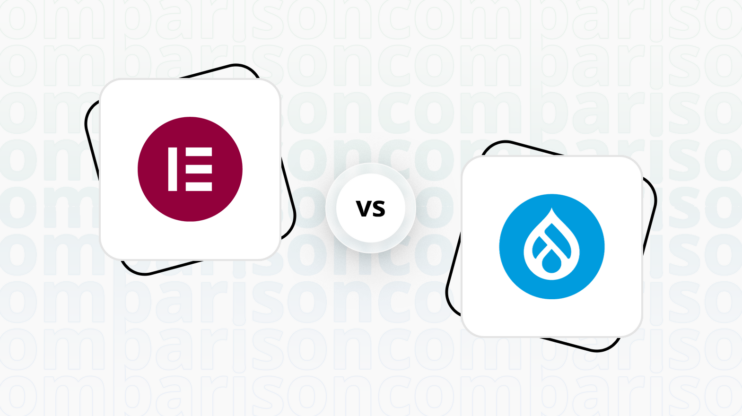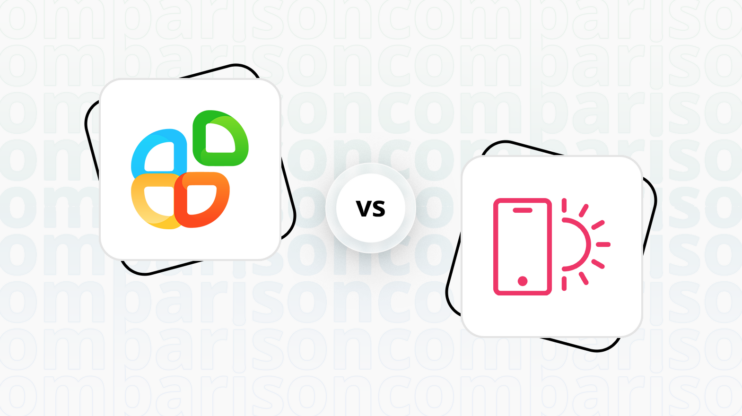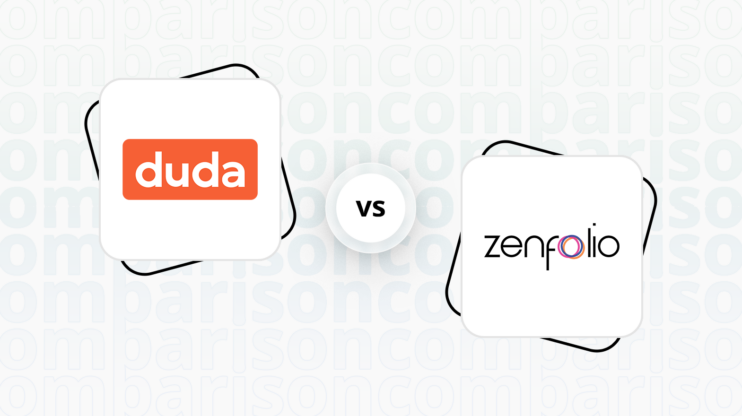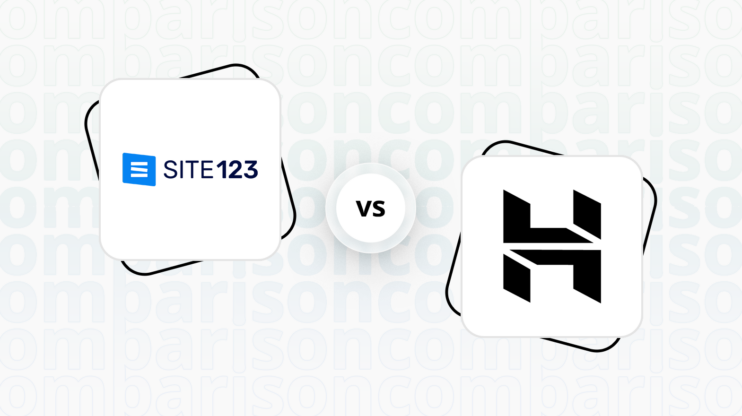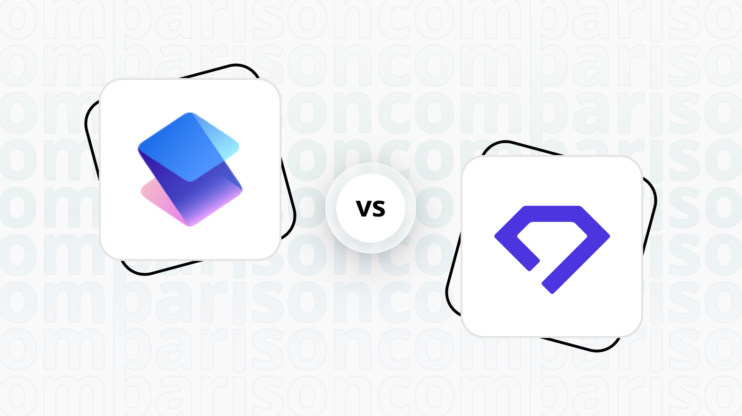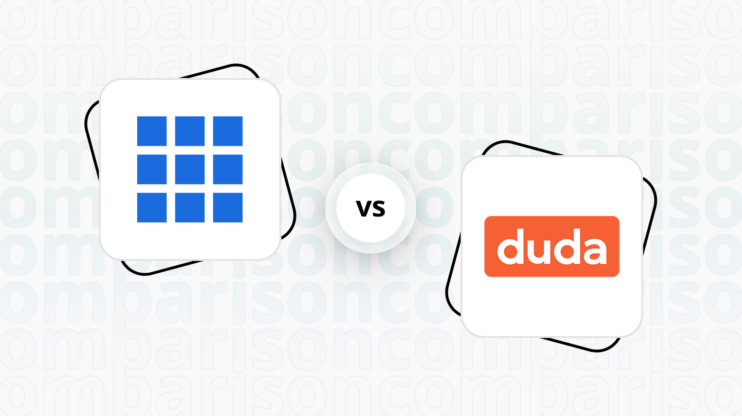Final verdict
Squarespace and Sellfy both offer unique strengths, but they cater to different user needs and preferences.
-
Squarespace (Overall Grade: 7.9/10)
is a versatile website builder that excels in design flexibility, ease of use, and comprehensive marketing tools. It is ideal for users seeking a hassle-free website creation experience with a wide array of templates and robust customer support. When comparing Squarespace vs Sellfy, Squarespace stands out for its superior design functionalities, user management, and security features, making it a strong choice for those looking to create professional websites without coding. -
Sellfy (Overall Grade: 6.0/10)
is tailored for creators looking to sell a variety of products, including digital, physical, subscription-based, and print-on-demand items. It offers a simple, user-friendly interface that allows for quick setup of an online store. In the Squarespace vs Sellfy comparison, Sellfy is best suited for users who prioritize ease of use and a streamlined ecommerce process, especially for digital products. However, it lacks the advanced design flexibility and comprehensive support that Squarespace provides.

|

|
|
|---|---|---|
|
Design functionalities & templates |
8.0 |
5.2 |
|
Ease of use |
8.3 |
7.8 |
|
Ecommerce |
8.2 |
6.8 |
|
Website Editors |
8.3 |
6.8 |
|
Product testing options |
7.4 |
7.3 |
|
Price |
8.4 |
7.9 |
|
Hosting quality |
7.6 |
7.3 |
|
Website speed optimization |
6.7 |
5.4 |
|
Plugins and integrations |
6.8 |
6.7 |
|
Marketing features |
8.1 |
7.1 |
|
Customer support |
7.8 |
5.8 |
|
Security |
8.8 |
7.2 |
|
AI capabilities |
7.5 |
0 |
|
User Management |
7.4 |
2.0 |
Best for ecommerce
 8.2
8.2
 6.8
6.8
Verdict
: Squarespace is ideal for those seeking a comprehensive and user-friendly ecommerce platform, while Sellfy is perfect for creators looking for simplicity and ease of use.
-
Squarespace
: Squarespace offers a robust set of ecommerce features, including secure payment processing, built-in marketing tools, and SEO optimization. Its intuitive interface and customizable templates make it a strong choice for those looking to create a professional online store without coding. However, when comparing Squarespace vs Sellfy, Squarespace may require a bit more time to master due to its extensive features. -
Sellfy
: Sellfy is designed for creators who want to sell a variety of products, including digital, physical, and subscription-based items. Its simple, user-friendly interface allows for quick setup of an online store, making it ideal for those who prioritize ease of use. However, it may lack some of the advanced features and customization options found in Squarespace.
Best for informational & business websites
 8.4
8.4
 5.7
5.7
Verdict
: Squarespace is the superior choice for creating informational and business websites, offering a more comprehensive set of features and a user-friendly experience compared to Sellfy.
-
Squarespace
: Squarespace excels in providing a wide array of design features and templates, making it ideal for creating professional and visually appealing informational websites. Its user-friendly interface, extensive learning resources, and robust customer support make it a hassle-free option for users. With a score of 8.4, Squarespace stands out for its comprehensive security measures and reliable hosting quality, ensuring a secure and stable online presence. -
Sellfy
: While Sellfy is primarily an eCommerce platform tailored for creators, it can also be used for informational websites. However, it lacks the advanced design flexibility and extensive template options that Squarespace offers. With a score of 5.7, Sellfy provides a simple and user-friendly interface but falls short in terms of customization and support for informational websites. When comparing Squarespace vs Sellfy, Sellfy is better suited for users focused on selling products rather than creating content-rich informational sites.
Detailed comparison
Design functionalities & templates
Design FunctionalitiesRepresents how well each platform allows for creative design and customization of websites.Score Components:
- Template Variety (30%): Range and quality of design templates.
- Customization (30%): Flexibility and options for design alterations.
- User Interface (20%): Ease and intuitiveness of the design process.
- Responsiveness (10%): Adaptability to different devices and screen sizes.
- Innovation (10%): Unique design features and tools.
 8.0
8.0
 5.2
5.2
🏆
Winner: Squarespace.
If you’re looking for a platform that offers more creative control, a wide array of design features, and a larger selection of templates, Squarespace is the preferred choice.
Squarespace boasts an impressive variety of website templates, offering over 120 pre-designed options to choose from. These templates cater to a wide range of needs and industries, from creative portfolios and sleek online stores to professional business websites and personal blogs.


Compared to Squarespace, Sellfy provides a collection of design templates through its theme store, located in the Store Customizer. Users have the option to preview these themes before applying them to their websites. As of the latest information, Sellfy offers five main theme options: Lumi\u00e9re, Noir, Savant, Id\u00e9e, and Mode. These themes cater to various aesthetic preferences and can be published to go live on a user’s website after selection and customization.
Get a head start on website creation with AI
Create a custom website tailored to your business needs 10X faster with 10Web AI Website Builder!
Ease of use
Ease of useReflects the platform’s overall user-friendliness.Score
Components:
- Learning curve (40%): Quickness and ease of getting started.
- Interface design (30%): Simplicity and intuitiveness of layout.
- User guidance (20%): Quality of tutorials and support.
- Flexibility (10%): Adaptability to various user skills.
 8.3
8.3
 7.8
7.8
🏆 Winner: Squarespace
. With a score of 8.3, Squarespace is known for its user-friendly interface and straightforward navigation, making it a great choice for those seeking a hassle-free website creation experience. Sellfy, scoring 7.8, offers a simple and intuitive interface, but it may not satisfy those seeking advanced design flexibility.
Learning Resources
🏆 Winner: Squarespace
. Squarespace provides extensive learning resources, including a comprehensive Help Center, clear video tutorials, live webinars, an informative blog, and an active community forum. On the other hand, Sellfy lacks a large community of users and does not have a community forum.
For ecommerce
EcommerceMeasures the platform’s effectiveness in supporting online business activities.Score Components:
- Ecommerce themes and templates (20%): Variety and design of templates.
- Product management (25%): Ease of managing and organizing products.
- Payment options (25%): Variety and convenience of payment methods.
- Ecommerce features (20%): Features for managing an ecommerce store.
- Integration (10%): Compatibility with external e-commerce tools and services.
 8.2
8.2
 6.8
6.8
Squarespace and Sellfy both offer robust ecommerce solutions, but they cater to different needs. Squarespace is a user-friendly platform that simplifies online store setup with an intuitive interface and customizable templates. It offers secure payment processing, flexible shipping options, and automated tax calculations. On the other hand, Sellfy is designed for creators looking to sell a wide array of products including digital, physical, subscription-based, and print-on-demand items. It offers a simple, user-friendly interface that allows for quick setup of an online store.

|

|
|
|---|---|---|
|
Ecommerce themes and templates |
7.5 |
7.0 |
|
Product page customization |
7.0 |
6.5 |
|
Payment processing and commissions |
7.8 |
8.0 |
|
POS capabilities |
6.5 |
4.0 |
|
Payment gateways |
7.5 |
6.0 |
|
Product numbers |
6.8 |
7.5 |
|
Additional ecommerce features |
7.2 |
6.5 |
Squarespace ecommerce features:
- Intuitive interface
- Secure payment processing
- Built-in marketing tools
- SEO optimization
- Website analytics
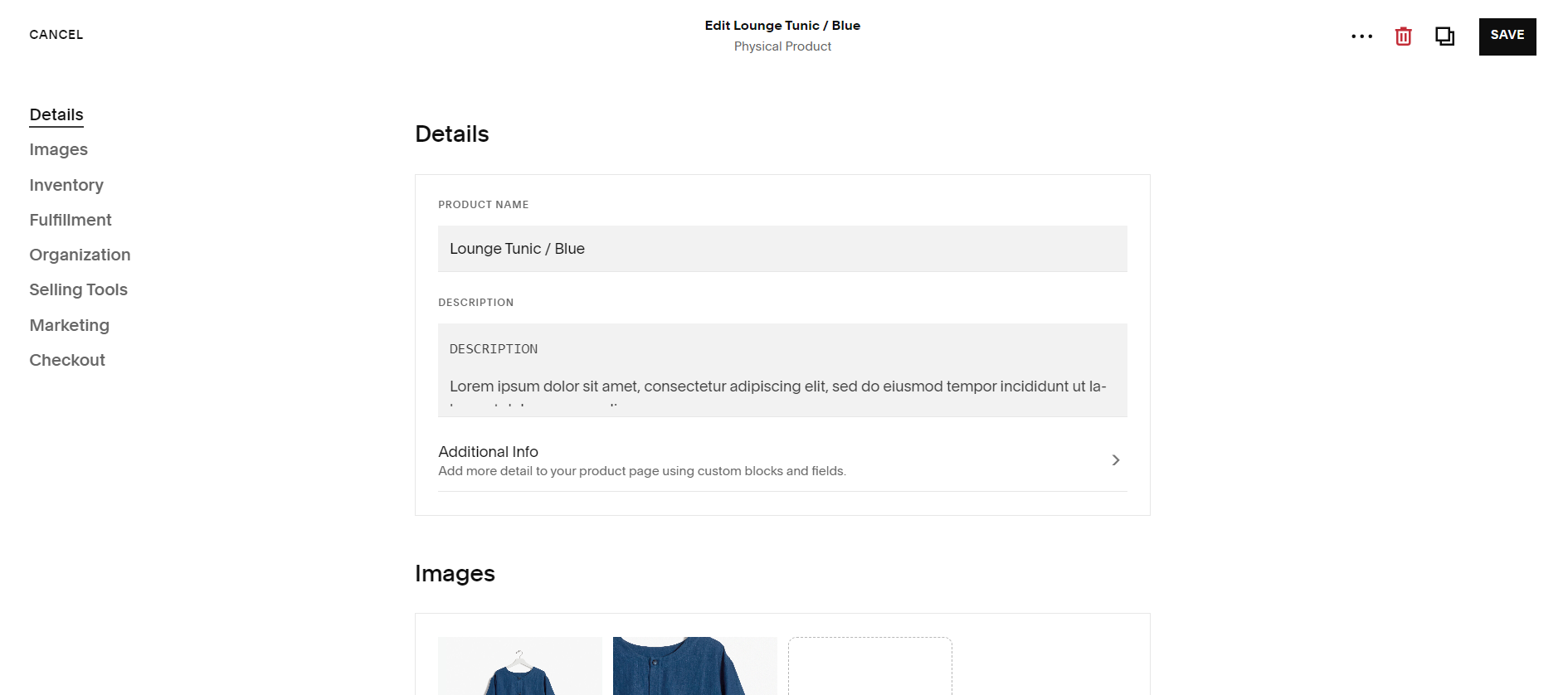
Sellfy ecommerce features:
- Product Listings
- Payment Gateways integration
- Product categories
Ecommerce themes & templates
Squarespace provides a diverse selection of around 50 ecommerce templates, catering to various industries like fashion, beauty, home goods, and technology. These templates range from clean and minimalist to bold and colorful, accommodating different brand aesthetics and product types. On the other hand, Sellfy’s templates are all designed for online stores, offering a streamlined design process.
Product page customization
Squarespace offers options for layout, design, and interactive elements on product pages. You can choose templates, customize colors, fonts, and content. Enhance engagement with features like customizable buttons, wishlists, comparisons, reviews, and related products. Advanced options include custom code injection and third-party app integrations. However, free templates have fewer customization options than premium ones.
Sellfy supports a diverse range of products including digital goods like music, videos, ebooks, and software, as well as physical products and print-on-demand merchandise such as t-shirts and mugs. The platform enables the sale of subscriptions, offering a means for recurring revenue. Sellfy provides tools for product protection and piracy prevention, ensuring secure file hosting and delivery.
Payment processing
Squarespace provides flexible payment processing for online stores with integrated gateways like Stripe and PayPal. External gateways can be set up for specific needs. Transaction fees may apply depending on the plan and payment method. Security measures include PCI compliance and fraud prevention. Additional features include payment links, support for subscriptions, and the ability to accept international payments in various currencies.
Sellfy supports two primary payment gateways, Stripe and PayPal, allowing for various payment options including credit/debit cards and localized payment methods in Europe. The platform does not charge transaction fees beyond its subscription cost, though payment processors’ standard fees apply. While Sellfy is robust in facilitating online sales with features for product management and marketing, it does not explicitly mention support for Point of Sale (POS) capabilities, indicating a focus on eCommerce rather than physical retail transactions.
Website Editors
Website EditorsEvaluates the platforms’ website building and editing capabilities.Score Components:
- Customization tools (40%): Range and power of editing features.
- Editor usability (30%): User experience within the editor.
- Design flexibility (20%): Freedom in layout and design changes.
- Update and maintenance ease (10%): Simplicity of updating and maintaining the site.
 8.3
8.3
 6.8
6.8
🏆
Winner: Squarespace
. Squarespace, with a score of 8.3, offers a user-friendly editor that allows easy drag-and-drop website creation without coding. With visually appealing templates and customization options, it caters to beginners and pros alike. The real-time editing experience ensures instant previews. Prioritizing content, it’s mobile-responsive and offers functional features like forms, social media integration, and online stores. Squarespace seamlessly integrates with tools for extended capabilities.
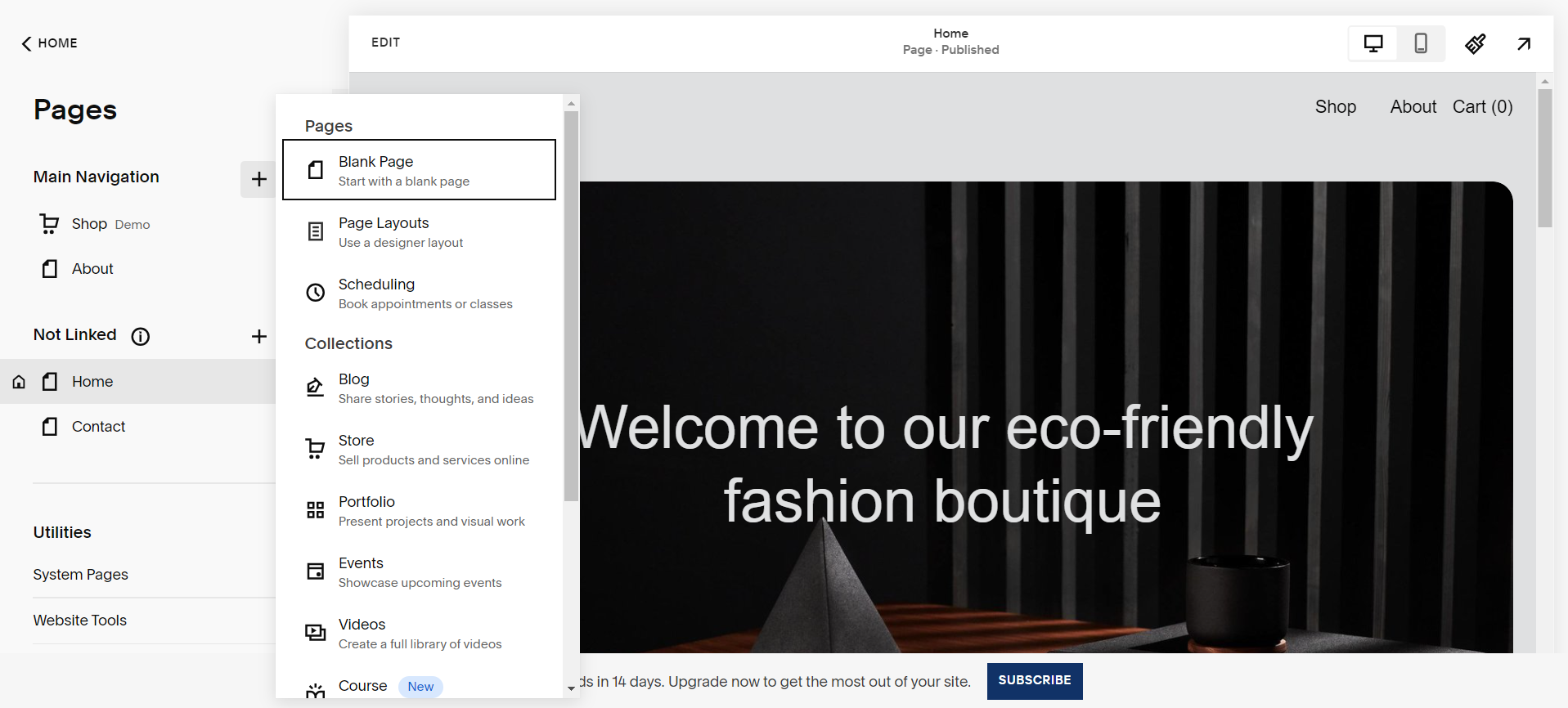
Sellfy’s editor, scoring 6.8, offers a straightforward and user-friendly platform for creating online stores, focusing on simplicity over advanced customization. It supports the sale of digital, physical, subscription-based, and print-on-demand products, alongside integrated marketing tools for promotion and sales optimization. Payment processing is secure and direct, utilizing popular gateways like Stripe and PayPal with no transaction fees. Despite some limitations in design customization and app integrations, Sellfy aims to provide a comprehensive e-commerce solution for entrepreneurs and creators.
Mobile editor/app
 8.5
8.5
 7.5
7.5
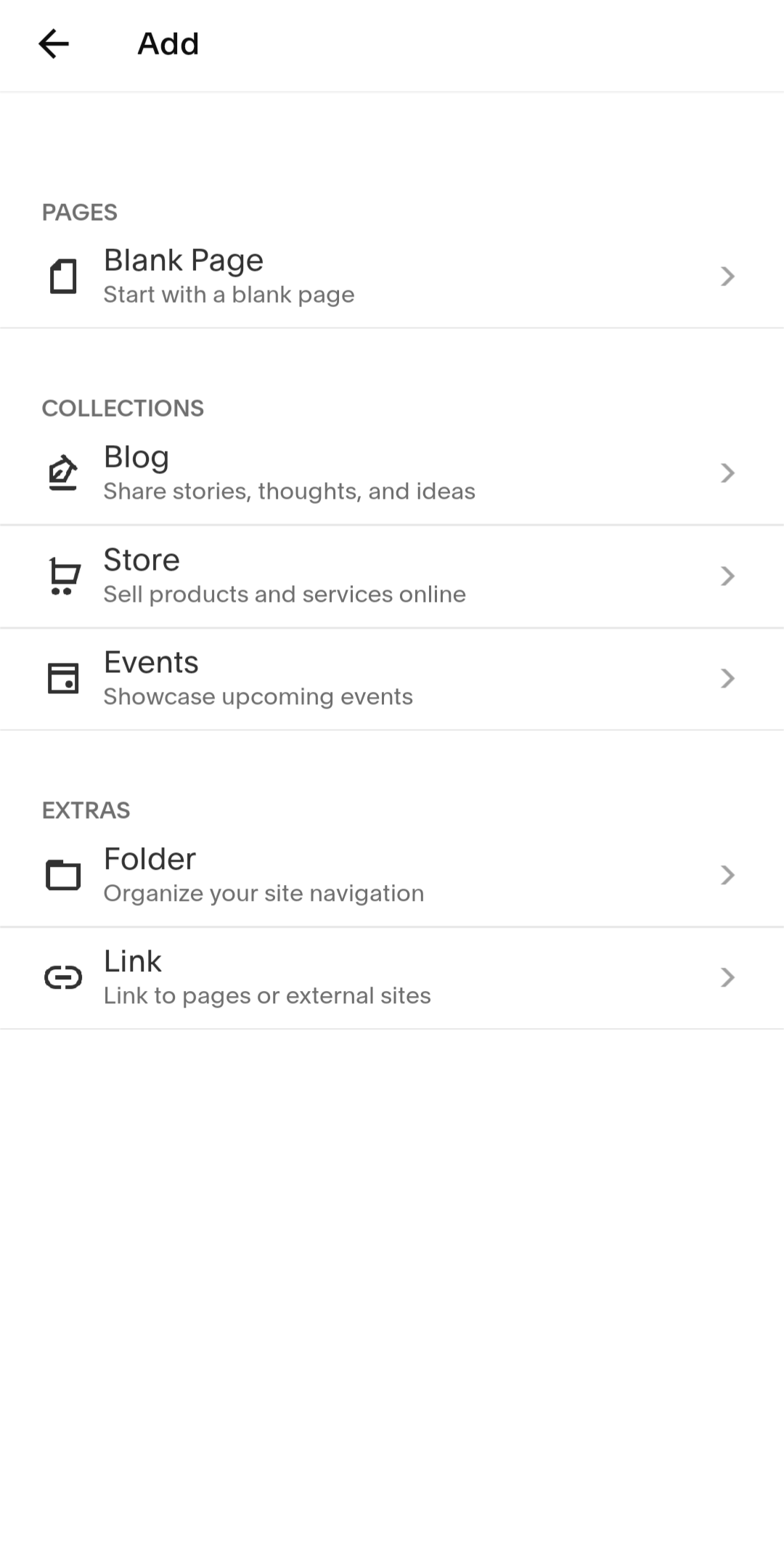
🏆
Winner: Squarespace
. Both Squarespace and Sellfy offer mobile apps for managing your website, but they cater to different needs and skill levels. Squarespace’s app allows mobile management of your website, enabling content editing, website analytics, online store management, and social media scheduling. However, complex tasks such as advanced design customization or creating new page layouts require access to the desktop editor, as the app doesn’t offer the full range of functionalities available on desktop.
Sellfy’s mobile app, on the other hand, enables store owners to manage their online stores on the go, offering functionalities such as viewing store performance metrics, managing and tracking orders, and receiving customized notifications. Users can also access summary reports of their store’s performance on a daily, weekly, or monthly basis. However, it’s not possible to change the layout or the design of the website itself.
In summary, Squarespace receives a higher rating due to its broader range of features and functionalities, while Sellfy is strong in ecommerce management but lacks the ability to change the layout or design of the website on the mobile app.
Product testing options
Product Testing OptionsAssesses the options for trying out platform features before commitment.Score Components:
- Trial quality (40%): Extent and usefulness of the trial or free version.
- Feature accessibility (30%): How many features are available to test.
- Trial duration (20%): Length of the trial period.
- Ease of transition (10%): Smoothness of moving from trial to paid plans.
 7.4
7.4
 7.3
7.3
Overall Result
:
Squarespace wins
. Squarespace scores 7.4, slightly higher than Sellfy’s 7.3. Both platforms offer a 14-day free trial, but Squarespace allows testing of most premium features, except for custom code, premium integrations, and removal of Squarespace branding. Sellfy, on the other hand, allows testing of premium features during the free trial. However, Sellfy offers a longer money-back guarantee period of 30 days compared to Squarespace’s 14 days.

|

|
|
|---|---|---|
|
Free Plan |
No | No |
|
Trial Duration |
14 days | 14 days |
|
Testing Premium Features |
Most, except for custom code, premium integrations and removal of Squarespace branding | During the free trial |
|
Money Back Guarantee |
14 days |
30 days |
Price
PriceLooks at the cost-effectiveness and value for money of each platform.Score Components:
- Plan value (40%): What each pricing tier offers.
- Transparency and clarity (30%): Clearness of pricing structures.
- Flexibility of plans (20%): Range of options to suit different budgets.
- Hidden costs (10%): Additional expenses not included in the plan.
 8.4
8.4
 7.9
7.9
Squarespace and Sellfy both offer a range of pricing options to cater to different needs, with Squarespace scoring slightly higher in terms of price.

|

|
|
|---|---|---|
|
$10-$15 |
Personal ($12/month): Build a basic website with limited features for personal use. Access to basic templates, mobile-friendly design, and some social media integrations. Value for price: 6.0 |
No offering at this amount. |
|
$15-$20 |
Business ($16/month): Upgrade features with custom domain, SEO tools, marketing tools like email campaigns, and analytics. Value for price: 7.5 |
No offering at this amount. |
|
$20-$30 |
Commerce ($26/month): Perfect for online stores with built-in eCommerce functionality (unlimited products), secure checkout, inventory management, and marketing tools. Value for price: 8.5 |
Starter ($29/month): Ideal for growing businesses with sales up to $10k/year. Offers unlimited products, digital and subscription products, domain connection, and 2,000 email credits. Annual savings available. Value for price: 7.5 |
|
$40-$80 |
Advanced Commerce ($40/month): Cater to high-volume stores with advanced eCommerce features like abandoned cart recovery, product subscriptions, gift cards, and real-time shipping quotes. Value for price: 9.0 |
Business ($79/month): Targets businesses with up to $50k in yearly sales, offering everything in the Starter plan plus 10,000 email credits, product and store design migration, product upselling, cart abandonment tools, and Sellfy branding removal. Value for price: 8.0 |
|
$100+ |
No offering at this amount. |
Premium ($159/month): For businesses with up to $200k/year in sales. Includes everything in the Business plan plus 50,000 email credits, product migration, and priority support. Annual savings are also offered. Value for Price: 8.5 |
location. As a result in rare cases the prices displayed here can differ from the ones you see on their
websites.
Hosting quality
Hosting
qualityExamines the reliability and performance of the hosting solutions.Score Components:
- Uptime (40%): Consistency and reliability of website availability.
- Speed (30%): Loading times and performance.
- Bandwidth and storage (20%): Sufficiency of resources provided.
- Data centers (10%): Quality and distribution of hosting infrastructure.
 7.6
7.6
 7.3
7.3
Winner: Squarespace
Squarespace offers proprietary cloud-based hosting with a 99.9% uptime guarantee and data centers across North America, Europe, and Asia. Sellfy, while having a higher uptime of 99.99%, does not provide an uptime guarantee or disclose the type of hosting and the locations of its data centers. This lack of transparency gives Squarespace the edge in this category.

|

|
|
|---|---|---|
|
Do they offer hosting? |
Yes, included in all paid plans |
Yes |
|
Data Centers: |
Squarespace’s data centers are strategically scattered across North America, Europe, and Asia |
Sellfy does not disclose the locations of its data centers |
|
Type of hosting: |
Proprietary cloud-based hosting |
Sellfy does not disclose the hosting type |
|
Uptime: |
99.9% |
99.99% |
|
Uptime Guarantee: |
Yes, 99.9% |
No |
Website Speed Optimization
Website Speed OptimizationEvaluates optimization of website loading timesScore Components:
- PageSpeed Score (30%): Google’s score indicating performance optimization.
- Loading Time (30%): The average time until a website is fully interactive.
- Mobile Optimization (15%): Optimization effectiveness for mobile devices.
- Resource Optimization (15%): Optimizing images, scripts, and other heavy resources.
- CDN Usage (10%): Use of CDN to enhance speed across geolocations.
 6.7
6.7
 5.4
5.4
🏆 Winner: Squarespace
Both Squarespace and Sellfy have strategies for website speed optimization, but Squarespace provides more detailed information and has a higher score in this area.

|

|
|
|---|---|---|
|
Focus |
Responsive design, image optimization |
Code Minification, Caching, Image Optimization |
|
Performance Tools |
Google Lighthouse, PageSpeed Insights |
Google PageSpeed Insights |
|
Key Strategies |
Responsive design, image optimization, CDN, code minification, lazy loading of images |
Code Minification, Caching, Image Optimization |
|
Load Times |
0.7s to 9.1 s (Average: 2.9s) |
Varies depending on optimization and website complexity |
|
Page Speed Scores Range |
20/100 to 93/100 (Average: 62.7/100) |
Varies depending on optimization and website complexity |
|
Core Web Vitals Improvement |
Emphasis on LCP, FID, CLS improvements |
No information provided |
Squarespace focuses on responsive design, image optimization, CDN, code minification, and lazy loading of images to optimize website speed. It has an average load time of 2.9 seconds and a PageSpeed score range of 20/100 to 93/100, with an average of 62.7/100. Squarespace also emphasizes improvements in Largest Contentful Paint (LCP), First Input Delay (FID), and Cumulative Layout Shift (CLS) to enhance user experience.
On the other hand, Sellfy’s strategies for website speed optimization include code minification, caching, and image optimization. However, it does not provide specific information about its load times, PageSpeed score ranges, or Core Web Vital improvements. This lack of transparency makes it difficult to evaluate Sellfy’s performance in website speed optimization.
Get a head start on website creation with AI
Create a custom website tailored to your business needs 10X faster with 10Web AI Website Builder!
Plugins and integrations
Plugins and integrationsMeasures the range and effectiveness of additional plugins and integrations.Score Components:
- Variety of options (40%): Range of available add-ons.
- Integration smoothness (30%): Ease of integrating plugins into the site.
- Quality of plugins (20%): Functionality and reliability of the options.
- Custom integration capabilities (10%): Support for custom or third-party integrations.
 6.8
6.8
 6.7
6.7
🏆 Winner: Squarespace.
With a score of 6.8, Squarespace slightly edges out Sellfy, which scores 6.7. Squarespace offers a range of integrations and extensions through custom code injection and third-party tools, while Sellfy provides various integrations to enhance ecommerce functionality and automate workflows. However, Squarespace’s integrations cover a broader range of categories, including analytics, marketing, commerce, and social media, giving it a slight advantage.
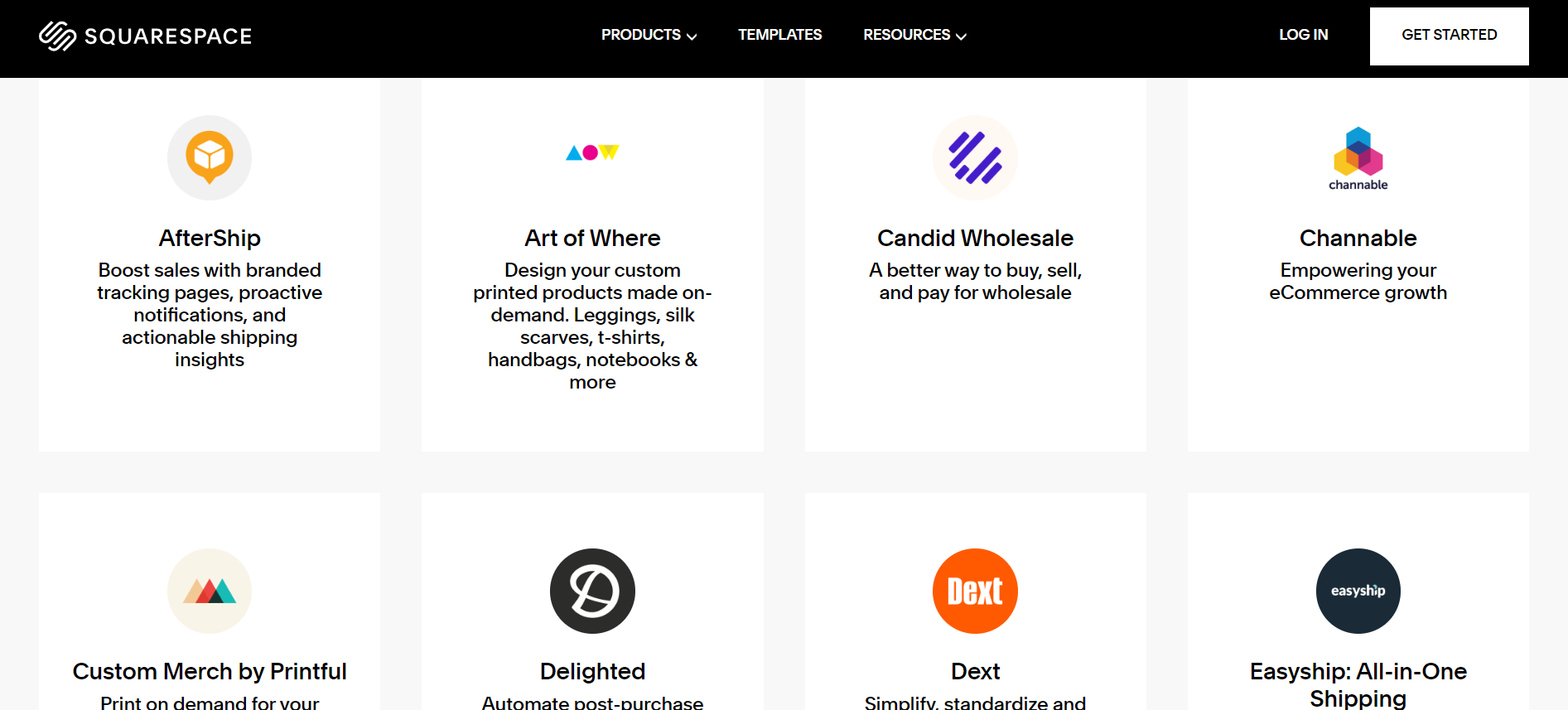
Marketing Features
Design FunctionalitiesRepresents how well each platform allows for creative design and customization of websites.Score Components:
- Template Variety (30%): Range and quality of design templates.
- Customization (30%): Flexibility and options for design alterations.
- User Interface (20%): Ease and intuitiveness of the design process.
- Responsiveness (10%): Adaptability to different devices and screen sizes.
- Innovation (10%): Unique design features and tools.
 8.1
8.1
 7.1
7.1
🏆
Overall Winner: Squarespace
. Squarespace stands out for its comprehensive marketing tools, including blogging, which Sellfy lacks. Both platforms offer SEO tools, email marketing, social media integration, analytics and reporting, and ads and promotions.

|

|
|
|---|---|---|
|
SEO Tools |
|
|
|
Email Marketing |
|
|
|
Blogging |
|
|
|
Social Media Integration |
Direct linking and selling on social platforms, plus feed displays on-site |
Yes |
|
Analytics and Reporting |
Detailed insights into website performance and visitor behavior |
Yes |
|
Ads and Promotions |
Integration with Google Ads and tools for managing sophisticated ad campaigns |
Yes |
Customer Support
Customer supportEvaluates the quality and availability of support options.Score Components:
- Response time (40%): Speed of support responses.
- Support quality (30%): Effectiveness and helpfulness of the support.
- Availability (20%): Range of support channels (phone, chat, email).
- Resource richness (10%): Quality of self-help and educational materials.
 7.8
7.8
 5.8
5.8
🏆 Winner: Squarespace
. Comparing Squarespace vs Sellfy, Squarespace takes the lead in this category with its diverse support options, including live chat, email, a community forum, and a comprehensive help center. While live chat and phone support are limited to weekdays, email support is available 24/7, ensuring users can get assistance whenever needed. The community forum and help center provide additional resources for troubleshooting and learning.
Sellfy, on the other hand, offers 24/7 customer support but lacks phone and live chat options. This means users primarily rely on email and possibly a knowledge base for self-service. While Sellfy’s support is available around the clock, the limited channels may not be as convenient for users needing immediate assistance.
Security
SecurityLooks at the platforms’ security measures and data protection.Score Components:
- Data protection (40%): Safeguards for user and customer data.
- SSL and encryption (30%): Implementation of secure connections.
- Compliance (20%): Adherence to industry security standards.
- Regular updates (10%): Frequency of security updates and patches.
 8.8
8.8
 7.2
7.2
🏆
Winner: Squarespace
. Squarespace’s security measures are more comprehensive, including secure server storage, encryption, strict access controls, compliance with regulations such as GDPR and CCPA, transparent privacy policies, and additional security measures like vulnerability scanning and malware detection. These measures collectively safeguard your website content and customer information.
Although Sellfy, while offering security features such as PDF stamping and limited download attempts to protect digital content, does not match the breadth of security measures provided by Squarespace. However, it does employ several security measures to safeguard sellers and their digital products from unauthorized access, fraud, and piracy, including the use of secure payment processors like Stripe and PayPal, unique download links for each purchase, and additional tools like PDF stamping to deter content sharing.
AI Capabilities
AI capabilitiesMeasures the effectiveness of AI-driven features and tools.Score Components:
- Automation efficiency (40%): Impact of AI on streamlining processes.
- Personalization (30%): AI-driven customization for users or customers.
- AI-Assisted design (20%): Role of AI in website design and functionality.
- Data analysis (10%): Use of AI in interpreting user data and analytics.
 7.5
7.5
 0
0

|

|
|
|---|---|---|
|
Personalized Design |
|
|
|
SEO Optimization |
AI-driven recommendations for better search engine visibility |
|
|
Customer Behavior Analysis |
Advanced analytics to understand customer preferences |
|
|
Sales Predictions |
|
|
|
Inventory Management |
AI tools to assist in efficient inventory handling |
|
|
Content Generation |
AI assistance in creating and optimizing site content |
|
🏆 Winner: Squarespace
. Squarespace, with a score of 7.5, utilizes AI to enhance the website creation and ecommerce experience. Its AI features focus on SEO optimization, customer behavior analysis, inventory management, and content generation.

Sellfy, on the other hand, does not have any AI capabilities. This lack of AI features may limit the platform’s ability to provide a streamlined and efficient user experience.
User Management
User ManagementAssesses the platforms’ capabilities in managing user roles, permissions, and accessibility.Score Components:
- Role Customization (40%): Flexibility in creating and defining user roles and
permissions. - Ease of Management (30%): User interface and tools for managing users.
- Access Control (20%): Effectiveness of access control measures for different user
levels. - Scalability (10%): Ability to manage a growing number of users efficiently.
 7.4
7.4
 2.0
2.0
🏆 Winner: Squarespace
. Squarespace offers a more robust user management system compared to Sellfy.
- Squarespace allows varying numbers of users with editing access depending on the plan. The Personal Plan allows one owner, Business and Commerce Plans permit 2 collaborators with different access levels, and the Enterprise Plan offers unlimited users, each with customizable access privileges, from full administrators to restricted contributors.
- Sellfy, on the other hand, does not support adding multiple users or staff to a single account.
Squarespace User Roles and Access Levels:
| Role | Description | Access Highlights |
|---|---|---|
| Owner | The primary user who created the website and has full access. | Full site access, including billing, site settings, content editing, and member management. |
| Administrator | Users granted nearly full access to manage the site alongside the Owner. | Access to most areas except for some owner-specific settings like ownership transfer. |
| Content Editor | Users focused on adding and managing site content without full site access. | Can add, edit, and delete content on pages, blog posts, and manage comments. |
| Billing | Users who manage the subscription and billing details. | Access to billing information and the ability to update subscription details. |
| Store Manager | Users who manage the ecommerce aspects of the site. | Can manage inventory, fulfill orders, manage customers, and view sales analytics. |
| Custom | A role defined by the site owner or administrators with specific access. | Customizable access as defined by the Owner or Administrators, can vary widely between sites. |
Additional Features

|

|
|
|---|---|---|
|
SSL Certificate |
|
|
|
Custom Domain |
|
|
|
Free Custom Domain Included |
|
|
|
International Domains |
|
|
|
Mobile Responsive |
|
|
|
Page Speed |
|
|
|
Website Builder Mobile App |
|
|
|
Convert a Website To An App |
|
|
|
Website Analytics |
|
|
|
Multilingual Sites |
|
|
|
Multiple Users |
|
|
User Feedback
Squarespace is well-liked for its easy-to-use interface and versatile tools, making it ideal for those who aren’t tech-savvy. It offers various features like website creation, SEO, online selling, and more, catering to different users. Customers appreciate its good customer support and visually appealing templates, creating a professional online presence. However, some users find issues with domain transfer/setup, limited customization options, and consider the pricing slightly higher. There are also occasional concerns about customer service and technical limitations like template rigidity and missing features.
The user feedback on Sellfy highlights its strengths in providing an efficient, compact online store setup that caters to specific needs with affordable pricing, including a 14-day trial period to familiarize users with the product. Many appreciate its user-friendly interface, internal marketing tools, and customization options, which enable sellers to tailor their storefronts to their brand, along with integrations for payment processing like PayPal and Stripe. However, criticisms include issues with mobile site speed, a desire for clearer insights, limitations on customization, and some customer service inefficiencies.
The making of this blog
We followed a clear, step-by-step process to write and research this article.
FAQ
Which platform is better for ecommerce, Squarespace or Sellfy?
Can I create a professional website without coding skills on Squarespace or Sellfy?
Which platform offers better customer support, Squarespace or Sellfy?
How do Squarespace and Sellfy compare in terms of pricing?
Are there any AI capabilities in Squarespace or Sellfy?
Which platform is more suitable for creating an informational or business website?










